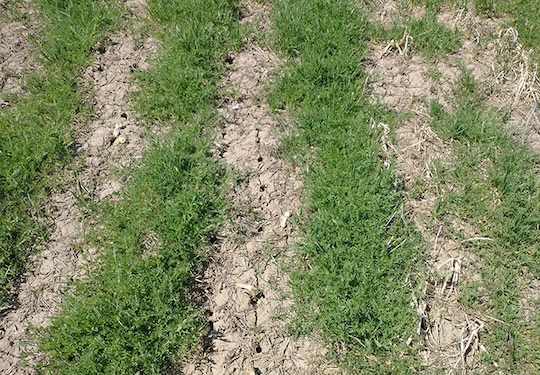| |
| |
| |
 |
|
@{mv_date_MMM d, yyyy}@ |
| |
|
| |
It's our annual review of the top stories of the year – the ups and downs, the BMPs, latest agronomic info and recent research findings – as we round out 2024. As for 2025, I wish each of you a happy, healthy New Year!
- Alex Barnard, Eastern editor
|
|
| |
|
| |
 Corn ear moulds such as Gibberella and their corresponding mycotoxins occur every year in Ontario. These mycotoxins, particularly DON, can be disruptive when fed to livestock.
» Read more...
Corn ear moulds such as Gibberella and their corresponding mycotoxins occur every year in Ontario. These mycotoxins, particularly DON, can be disruptive when fed to livestock.
» Read more...
A wet spring has delayed soybean planting for many Ontario growers, but the Ontario Field Crop team reminds growers that while timely planting is important for maximum yield, soybeans are more tolerant to late planting than other crops.
» Read More...
The CGC is creating variety designation lists for Barley, Canada Eastern Food and Barley, Canada Western Food, as well as updating the Official Grain Grading Guide.
» Read More...
The average value of Canadian farmland continued its steady climb in 2023, increasing by 11.5 per cent – slightly less than the 12.8 per cent increase reported in 2022.
» Read More...
The Farmer Wellness Initiative provides the Ontario ag community with unlimited access to a free, 24/7 phone line that connects them to tailored mental health counselling.
» Read More...
|
| |
|
| |
 Soybean gets much of its nitrogen through a partnership with N-fixing bacteria that live in nodules on the plant’s roots. But the biological process of fixing atmospheric N and converting it into a form that the plant can use is sensitive to low soil moisture. Now, research is underway to accurately identify soybean lines that continue to fix N even when the weather turns dry.
» Learn more...
Soybean gets much of its nitrogen through a partnership with N-fixing bacteria that live in nodules on the plant’s roots. But the biological process of fixing atmospheric N and converting it into a form that the plant can use is sensitive to low soil moisture. Now, research is underway to accurately identify soybean lines that continue to fix N even when the weather turns dry.
» Learn more... |
| |
 A few Ontario growers are using bio-strip tillage to prepare a good seedbed for their next crop. Instead of mechanical strip tillage, they plant certain cover crop species that produce a similar – or perhaps better – strip for planting. Two Ontario researchers are comparing bio-strip tillage with other tillage options and assessing the effects on corn yields and the bottom line.
» Learn more...
A few Ontario growers are using bio-strip tillage to prepare a good seedbed for their next crop. Instead of mechanical strip tillage, they plant certain cover crop species that produce a similar – or perhaps better – strip for planting. Two Ontario researchers are comparing bio-strip tillage with other tillage options and assessing the effects on corn yields and the bottom line.
» Learn more... |
| |
 You may be familiar with nitrification inhibitor products that aim to keep more nitrogen in the soil for the crop’s use and reduce N losses to the water and air. Some plants naturally release compounds from their roots that can perform the same role – a process known as biological nitrification inhibition. Researchers are working to breed elite Canadian wheat varieties with enhanced BNI capacity.
» Read More...
You may be familiar with nitrification inhibitor products that aim to keep more nitrogen in the soil for the crop’s use and reduce N losses to the water and air. Some plants naturally release compounds from their roots that can perform the same role – a process known as biological nitrification inhibition. Researchers are working to breed elite Canadian wheat varieties with enhanced BNI capacity.
» Read More... |
| |
| |
|
| |
|
|
| |
| |




